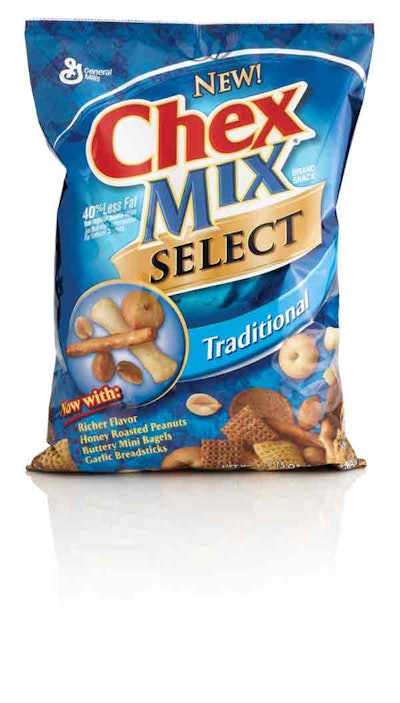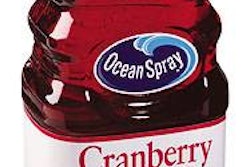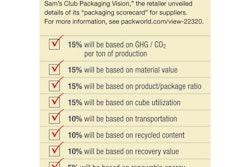At B.J.’s, Costco, and SAM’s Club, the nation’s three largest club store chains, package size matters. But limiting packaging strategy to large size alone misses the point of today’s warehouse club environment. Because these stores look for a total solution—operational efficiencies, merchandizing potential, profit, sustainability, and products that are unique to their chain.
Packaged goods companies that recognize this fundamental truth about the club store difference will find the warehouse club channel a venue for innovation and revenue growth: Tyson Foods is a good example.
“Packaging for club stores has different needs,” says Cary Richardson, vice president of marketing for club stores, Tyson Foods. “In traditional retail accounts, we are selling a line of products, whereas in the club format, we consider ourselves to be item sellers. For this channel, we change our approach to the product and the package.”
Three years ago Tyson developed and introduced a unique product for a club store customer—Tyson Cranberry Stuffed Chicken Breasts. A close-up photo of the product printed on high gloss foil catches the eye of the shopper and positions the frozen entrée as an upscale holiday offering. Packages are presented foil side out in the master shipper, creating a billboard effect.
“Offering something special is what club store members expect from Tyson Foods,” says Dustie Jenkins, vice president of sales and marketing for club stores, Tyson. “Members want to be able to go into a club store and find something new and different—that treasure hunt item that is going to really wow them. Differentiation is the key to our success. The strong sales of Cranberry Stuffed Chicken Breasts and other seasonal items make that point exceptionally well.”
Customizing Chex Mix
“Customization is the key to success in the club channel,” says Nancy Brown, managing partner, CBX (www.cbx.com), a global design and brand strategy firm. “The category buyer wants something different—a product their members can’t get at retail.”
General Mills Chex Mix is a case in point. In the club channel, Chex Mix was, until recently, offered either in large bags or as two smaller sized bags shrink-wrapped together. The large bags offered significant value for the members and a high price point for the club store, but were hard for the member shoppers to handle.
General Mills, working with CBX, developed a sub-brand for the club stores—Chex Mix Select. This brand featured more ingredients and a richer flavor than what was offered through conventinal retail channels. The added treats were prominently displayed on the package. The word “select” boldly stands out within a gold banner. The package positioned Chex Mix Select as an upscale product, which commands a premium price.
“We felt Chex Mix Select needed to leverage the Chex Mix brand, but at the same time alert the member that this is something new, different, and special,” says Brown. “Chex Mix Select draws the attention of club store members and the sales reflect that. The price point on this premium product is making the club stores happy as well.”
CPG companies do not always have to create a new product for the club channel. They must, however, find ways of adding something extra. The bundled solution is a perfect example of that something extra.
Unique challenges
“The vagaries of attracting the club store customer, combined with a manufacturer’s need to be cost effective, provide unique challenges for being successful in this channel,” says Bill Sterling, the vice president of Visual Communication at Proteus (www.proteusdesign.com), a strategic design and marketing consultancy. “In order to achieve the value-added merchandising required by the retailer, manufacturers must provide a unique product and package that immediately says ‘value’ to the club store crowd.”
For Keurig, the U.S. industry leader in single-cup coffee brewing technology, this meant offering club members something more than they could obtain at a conventional retailer. Proteus designed an “add-on” box—a Bonus Pack of 72 assorted single-service beverages—with the B 50 brewing unit. The bundled bonus pack was only made available to one club store chain.
The add-on bonus pack box had three bottom flaps that slid into the top of the retail brewer box. The add-on box was glued to the bottom box, creating a seamless connection. This was accomplished offline at the Keurig factory to keep manufacturing and inventory costs to a minimum.
“The bonus pack was an effective means to sell in the club store environment,” says Sterling. “It added value to the product while also appealing to the member’s expectations of finding something special. It appealed to the club store chain because it was a custom package exclusive to them.”
What about commodity products? Is the strategy any different? “The big question with commodity products that you need to answer in the club channel is—why buy this item here and why buy it today,” says Tammy Cahill, group director of Retail Activation, LPK (www.lpk.com), an international design agency involved recently in a Procter & Gamble re-launch. “We develop packaging strategies to motivate consumers to pick up the item.”
When P&G re-launched the Herbal Essence line, different strategies were employed for the big box retailer than for the club stores. For the retailer the company introduced the entire line to consumers, educating the shopper on products serving different hair types and stimulating trial. The club-store strategy was to identify the potential top-selling item in the line and offer it in a gift format. The club store package bundled the shampoo and a conditioner with travel sizes of both.
“We wanted to offer the club members a great value,” says Cahill. “Even though these were not ‘super size’ containers, members were persuaded to pick up their Herbal Essence at the club store. The strategy was a success and the value packs sold quickly.”
High-impact graphics
Club store aisles are wide, long, and filled from floor to ceiling with products. Bold graphics are one way to draw the shopper to the product.
“We are always looking for packaging that can offer some unique properties to delight consumers and have them come back,” says Gary Dyck, director of Channel Development at Kraft Foods. “Since the pallet display is the selling location in the club store, the visibility of the package on the pallet is critical. We strive to have four-sided product exposure for the display, which gives maximum flexibility to the club owner. Club operators can set the pallet display down anywhere or anyway and have at least one side, if not more, exposed for shopping. We also try to design the pallet so there is very little handling or none at all for club employees once the pallet is in its selling location.”
Since visibility and brand recognition is so critical in club-store sales, a new high-strength reinforced paperboard carton was developed for Kraft’s Oreos that featured reverse printing done on a gravure press. The high-quality graphics presented on a high-gloss surface instantly catch the eye and convey the promise of this well known brand. The pallet display is essentially a glowing wall of cookies. Sales of Oreos in the club channel have increased following the introduction of the new pack.
“In the club channel, manufacturers are using some of the highest quality graphic presentations around,” says Dyck. “Walk into a club store today and it looks nothing like it did only three or four years ago. It is quite a difference from the channel’s early years of plain brown corrugated cartons stacked on pallets.”
“Club store members have a shopping list in mind but are also keen to discover something new and different, as if they’re on their own treasure hunt,” says Diane Bowman, creative director, LPK. “We leverage package design elements to give the club member the feeling they should buy the item now because the item may not be available next time they are in the store.”
One spring, Procter & Gamble introduced Bounty paper towels with floral prints. To make the product stand out, the LPK design team did away with the clear poly wrap package in favor of a floral motif on all six sides of the pack. The package was radiant and different.
“The package looked very spring-like and unique,” Bowman says. “The implied message was that this offering is fleeting. The club store said the floral-print Bounty flew off the shelves and into members’ shopping carts, selling out in record time.”
Sustainability’s role
Sustainability is all the rage these days, but the club stores have been examining the totality of packaging, including sustainability, for some time.
“The biggest wins in sustainable packaging do not necessarily come from substituting one material for another, but from looking at the entire supply chain and understanding how to design a package that is a merchandising improvement,” says Amy Zettlemoyer, director of packaging, SAM’s Club.
The digital media packaging at SAM’s Club, until recently, employed bulky clamshells that not only displayed the products, but also discouraged theft. Zettlemoyer and her team developed a package one-third smaller. The new package features high-impact graphics on recycled paper and a window made of recycled PET to display the product to club members.
To decrease loss from theft, attractive permanent end caps feature empty display packaging. The empties are identical in every respect to the actual product package—value statements and product specifications are presented. Members take the empties to a service desk, where the digital media is purchased.
Says Zettlemoyer, “In terms of the supply chain, the smaller packages make transportation, storage, and display more economical. They are also more environmentally friendly than the packaging format they replaced. This is a great example of the type of total packaging solution we’d like to see more of.”
Tying it all together
Brian Wagner is co-owner and vice president of PTIS (www.pti-solutions.com), a leading management and packaging consultancy. Following a recent visit to a club store, Wagner offered these observations.
“One company that really stood out as doing a great job was Hershey,” says Wagner. “Throughout the store Hershey products had a recognizable brand image. Each Hershey pallet offered uniformity in the primary and secondary packaging. It looked like the trays and the primary packages were designed at the same time and with the club store in mind. So many manufacturers simply repack products from other channels for the club stores, and it shows in a disappointing display.”
Wagner said the Hershey products were easily recognized 20 feet down an aisle. The graphics on the Hershey trays are big and bold and they consist of just a few words, for example HERSHEY’S COCOA.
Another example cited by Wagner was the Energizer Battery Center. The Battery Center features bold, clean, eye-catching graphics designed to trigger the feeling that the shopper better stock up on batteries—now.
In terms of the short product lifecycles in the club channel, Wagner offered the following advice. “Be strategic,” he says, “and realize that mass customization is a key to success in this channel. Develop a common packaging footprint that allows you to cost-effectively bring something new to each of your club store customers every quarter. Fill the club store product pipeline 24 months ahead.”
CPG companies needing such advice are likely to succeed in their own hunt for club-store treasure.
Sam’s Club Packaging Principles
Amy Zettlemoyer, director of packaging for SAM’s Club, identifies five packaging principles that all CPG firms should keep in mind:
• Ensure safety. Make sure the pallet load is safe through the entire supply chain—strong enough to ship, store in the racks, and merchandize on the floor.
• Maximize operational efficiency—door-to-floor pallet design. “It comes in, goes to the floor, and members shop it,” says Zettlemoyer. “We want to limit extra effort associated with packaging.”
• Create self-selling packaging by communicating value and making sure that members can easily shop the product in the store and use it at home. “Many companies design packaging to run on their equipment and ship it through the system,” she said. “That really isn’t enough. It is important for our suppliers to understand how a member is going to experience the package in our environment. CPG companies and their package designers who want to do business with us need to spend time in SAM’s clubs watching and understanding what is important to our members.”
• Optimize packaging financials—make sure each pallet achieves the anticipated return on investment.
• Improve the sustainability of packaging and help SAM’s Club achieve its sustainability goals.



























